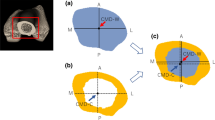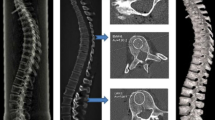Abstract
To analyze the mechanical properties of cortical and cancellous bone in the femur and relate them to bone mineral, we retrieved 14 pairs of femurs from elderly subjects at autopsy. Bone mineral was measured by quantitative single-energy computed tomography. Significant associations were found between two types of cortical bone mechanical tests, three-point bending and pull-out of screw, one performed on the right and the other on the left femur. Similarly, pairwise associations were found between the mechanical tests of cancellous bone, punch and cube compression, one performed on the right and the other on the left femur. Also, all mechanical tests correlated with bone mineral as determined by quantitative single-energy computed tomography. In general, bone mass measures correlated better with bone strength than did bone density measures. However, the cortical and cancellous bone mechanical properties were not interrelated, which suggests a separate regulation of the strength of these two types of bone. Bone mineral may not only have importance for the occurrence of fractures; it should be considered as an important factor in the fixation of fragile bone.
Similar content being viewed by others
References
Alho A, Høiseth A (1991) Bone mass distribution in the lower leg. A quantitative computed tomography study of 36 individuals. Acta Orthop Scand 62:468–470
Alho A, Husby T, Høiseth A (1988) Bone mineral content and mechanical strength. An ex vivo study on human femora at autopsy. Clin Orthop 227:292–297
Beck TJ, Ruff CB, Warden KE, Scott WW Jr, Rao GU (1990) Predicting femoral neck strength from bone mineral data. A structural approach. Invest Radiol 25:6–18
Benterud JG, Alho A, Strømme JH, Høiseth A (1991) Calcium equivalence of bone mineral measured by single-energy computed tomography — an autopsy study of femur. Trans Eur Orthop Res Soc 1:66
Bentzen SM, Hvid I, Jørgensen J (1987) Mechanical strength of tibial trabecular bone evaluated by x-ray computed tomography. J Biomech 8:743–752
Bohr H, Schaadt O (1983) Bone mineral content of femoral bone and the lumbar spine measured in women with fractures of the femoral neck by dual photon absorptiometry. Clin Orthop 179:240–245
Ciarelli MJ, Goldstein SA, Kuhn JL, Cody DD, Brown MB (1991) Evaluation of orthogonal mechanical properties and density of human trabecular bone from the major metaphyseal regions with material testing and computed tomography. J Orthop Res 9:674–682
Currey JD (1969) The mechanical consequences of variations in the mineral content of bone. J Biomech 2:1–11
Dalén N, Hellström LG, Jacobson B (1976) Bone mineral content and mechanical strength of the femoral neck. Acta Orthop Scand 47:503–508
Esses SI, Lotz JC, Hayes WC (1989) Biomechanical properties of the proximal femur determined in vitro by single-energy quantitative computed tomography. J Bone Miner Res 4:715–721
Hayes WC, Piazza SJ, Zysset PK (1991) Biomechanics of fracture risk prediction of the hip and spine by quantitative computed tomography. Radiol Clin North Am 29:1–18
Høiseth A, Alho A, Husby T (1991) Assessment of bone mineral content in the internal bone volume. Acta Radiol 32:1–5
Husby T, Høiseth A, Alho A, Rønningen H (1989) Rotational strength of the femoral neck. Computed tomography in cadavers. Acta Orthop Scand 60:288–292
Hvid I (1985) Cancellous bone at knee: a comparison of two methods of strength measurement. Arch Orthop Trauma Surg 104:211–217
Lotz JC, Hayes WC (1990) Estimates of hip fracture risk from falls using quantitative computed tomography. J Bone Joint Surg [Am] 72:689–700
Mazess RB, Borden H, Ettinger M, Schultz E (1988) Bone density of the radius, spine, and proximal femur in osteoporosis. J Bone Miner Res 3:13–18
Mosekilde L, Bentzen SM, Ørtoft G, Jørgensen J (1989) The predictive value of quantitative computed tomography for vertebral body compressive strength and ash density. Bone 10:465–470
Sedlin ED, Hirsch C (1966) Factors affecting the determination of the physical properties of femoral cortical bone. Acta Orthop Scand 59:382–385
Snyder SM, Schneider E (1991) Estimation of mechanical properties of cortical bone by computed tomography. J Orthop Res 9:422–431
Vose GP, Mack PB (1963) Roentgenologic assessment of femoral neck density as related to fracturing. Am J Roentgenol 89:1296–1301
Wahner HW (1989) Measurements of bone mass and bone density. Endocrinol Metab Clin North Am 18:995–1012
Author information
Authors and Affiliations
Rights and permissions
About this article
Cite this article
Alho, A., Strømsøe, K. & Høiseth, A. Pairwise strength relationships of cortical and cancellous bone in human femur: an autopsy study. Arch Orthop Trauma Surg 114, 211–214 (1995). https://doi.org/10.1007/BF00444265
Received:
Issue Date:
DOI: https://doi.org/10.1007/BF00444265




